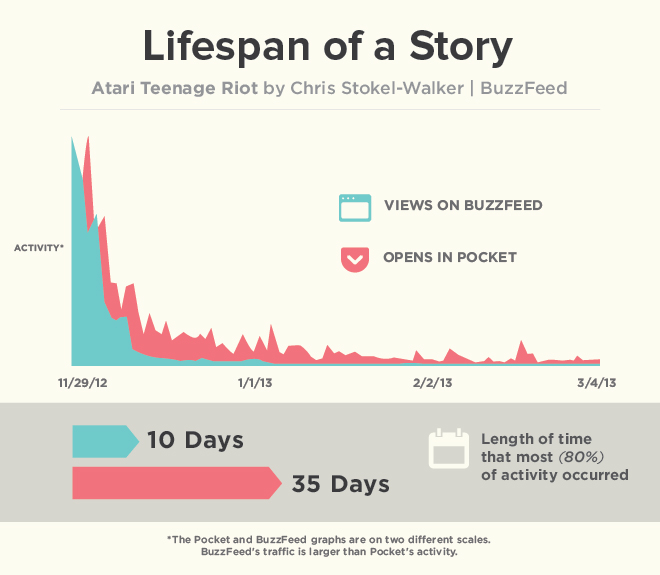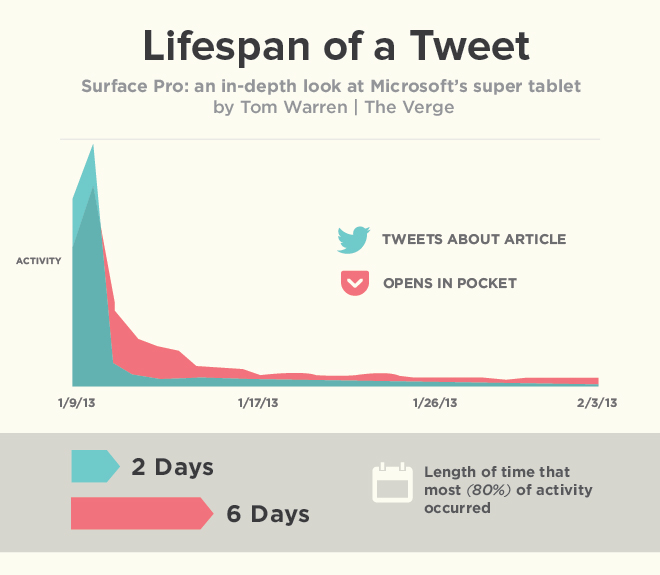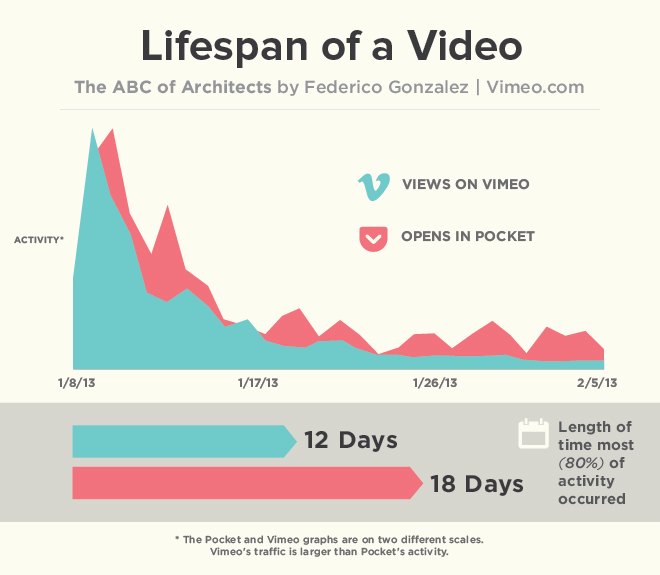How Pocket Extends the Life of a Story
Pocket users already know this: The ability to “save for later” can completely change how we consume content, and how much of it we consume.
Just like the DVR changed how we enjoy TV—and even what types of shows we watch—”save for later” is having the same effect on web content. After the initial flurry of tweets and Facebook posts dies down, stories can find an extended life in Pocket.
So, how long do stories live in Pocket?
To find out an article’s extended life, we can look at its most active consumption period on the web compared to Pocket. For the purposes of this post, we’ll measure the number of days it takes for an article to reach 80% of its total consumption.
Below is a breakdown of web activity for BuzzFeed’s 4,500-word story on the history of Atari’s Pong, published in November and written by Chris Stokel-Walker. The story’s most active consumption period on the web was 10 days—but when we look at “opens” in Pocket, the story’s most active period was 35 days:

It’s important to note that BuzzFeed’s traffic for the story is much larger than Pocket’s activity, but you see a clear extension of that story’s lifespan when you compare the two.
We see similar behavior when comparing an article’s activity on Twitter versus its activity in Pocket. For this Verge article about the Microsoft Surface by Tom Warren, its Twitter activity had a most active period of two days. In Pocket, it was six days:

And here’s the life of a video, “The ABC of Architects” by Federico Gonzalez, posted on Vimeo. The most active period for Vimeo views was 12 days, and in Pocket it was 18 days:

Why Does Lifespan Matter?
As users continue to consume content across multiple devices, including tablets and phones, we think it’s important to investigate not just the popularity of a story or video, but its longevity. When high-quality content can continue to thrive for more than a month, as in the case with BuzzFeed, we view that as a positive development for publishers.
The longer you let people hold on to content, the better the odds that they’ll end up consuming it. The more they consume it, the more likely they are to share it across social media—and the longer that story lives everywhere.
At Pocket, we’re excited to work with publishers to explore how longevity can help high-quality content. If you’re a publisher and want to learn more, or see the lifespan of your stories, email us at publishers@getpocket.com.
